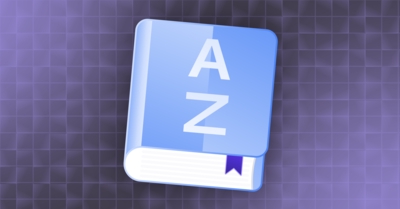In today’s complex identity and access management (IAM) landscape, ensuring secure access to sensitive data and resources requires a robust access control model. A Policy-Based Access Control (PBAC) model offers a more dynamic and granular approach to authorization than common models like Role-Based Access Control (RBAC).
PBAC is a type of access control model that relies on predefined policies to determine user access to resources. These policies consider various attributes such as subjects (users, applications), objects (files, databases), actions (read, write, delete), and the surrounding environment (time, location, device) to make dynamic authorization decisions and enhance data security.
Key differences between PBAC and RBAC
While RBAC assigns permissions based on predefined user roles, PBAC offers a more granular approach. Here’s a breakdown of the key differences between the two access control systems:
- Focus: PBAC focuses on policies that consider a wider range of attributes such as users, objects, and actions, while RBAC depends solely on user roles.
- Granularity: PBAC offers fine-grained access control, allowing for more precise access decisions based on predetermined policies. RBAC, on the other hand, provides users with broader access rights based on pre-assigned roles.
- Flexibility: PBAC policies can be easily modified to adapt to changing security needs and user behavior, offering more dynamic authorization mechanisms relative to the general access rules established by RBAC.
Components of a PBAC system
There are several components to a PBAC system:
- Subjects: Users or applications requesting access (e.g., employee ID, job title, location).
- Objects: Protected resources like files, databases, or APIs (e.g., file type, sensitivity level).
- Actions: Operations performed on objects (e.g., read, write, modify, delete).
- Environment: The context surrounding the access request (e.g., time of day, network location, device type).
- Policies: Defined rules that determine access based on attribute combinations (e.g., “Finance employees with ‘Manager’ role can only access budget reports during working hours from a company-approved device”).
- Authorization engine: Evaluates access requests against defined policies and grants or denies access.
How PBAC works
A typical PBAC workflow includes the following steps:
- Access request: A user or application requests access to a specific resource.
- Attribute collection: Relevant attributes such as objects, actions, and environment are gathered.
- Policy evaluation: The authorization engine evaluates the access request against predefined policies.
- Access decision: Based on the policy evaluation, the system grants or denies access to the requested resource.
Benefits of PBAC implementation
Some of the advantages of implementing PBAC within your infrastructure include:
- Enhanced security posture: PBAC’s fine-grained access control minimizes vulnerabilities associated with identity and reduces the risk of unnecessary access to sensitive data.
- Improved compliance: PBAC helps organizations meet regulatory requirements (e.g., HIPAA, GDPR, and NIST) by automating the enforcement of access control policies that these frameworks mandate.
- Increased scalability: PBAC systems can adapt to new user roles, resources, and access needs with greater ease compared to RBAC.
- Dynamic authorization: PBAC policies can consider real-time attributes like location and device type, enabling more context-aware access decisions.
- Reduced administrative overhead: PBAC can help automate access control through predetermined policies and streamline user provisioning and access management tasks.
Use cases for PBAC
PBAC offers a versatile access control solution for various industries and use cases, helping secure sensitive information based on the needs of your organization. Some examples are:
- Healthcare: Secure access to patient records based on doctor’s specialty, patient location, and the type of data accessed.
- Finance: Grant access to financial transactions based on employee role, account type, and transaction amount.
- Cloud computing: Implement access control for cloud resources like AWS or Azure based on user identity, resource type, and API calls.
- Zero trust security: Integrate PBAC with a zero trust model to implement the principle of least privilege (PoLP) and continuous verification.
Challenges of PBAC
While there are several advantages to the PBAC model, it can often be tricky to implement due to the careful planning and configuration it necessitates. Some challenges to be mindful of:
- Complexity: Designing and managing complex PBAC policies can be challenging, requiring careful consideration of various attributes and potential interactions.
- Performance considerations: Evaluating numerous attributes during access requests can impact system performance and result in delays, especially in high-volume environments.
- Expertise and tools: Implementing a PBAC system requires specialized tools and cybersecurity personnel with expertise in policy creation and enforcement.
PBAC vs. Attribute-Based Access Control (ABAC): A key distinction
While both PBAC and ABAC offer fine-grained access control, there’s a subtle difference in methodology. PBAC focuses on predefined policies that encompass various attributes, whereas ABAC evaluates access based on individual attribute values. This distinction makes PBAC potentially easier to manage, as policies can group similar attributes for efficient evaluation.
Conclusion
PBAC offers a powerful and dynamic approach to access control, making it ideal for complex environments with diverse user needs and sensitive data. While implementing PBAC requires careful planning and configuration, the benefits of a policy-based access control model can help ensure that end users only have the necessary access permissions, reducing the potential of data breaches and security incidents while streamlining your approval processes.
To learn more about how ConductorOne can help your organization implement fine-grained access control, check out our product tour, or chat with us!




